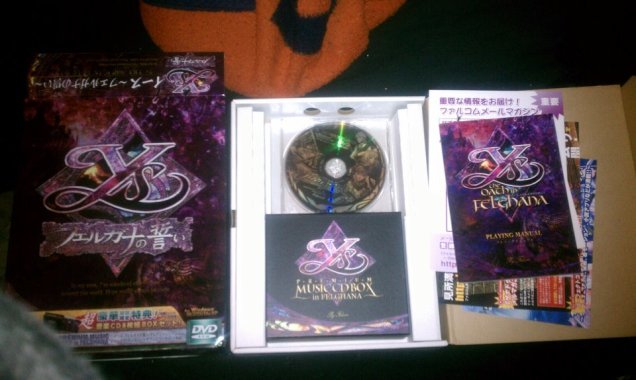When Bandai announced that they were bringing the Gagharv Triology of the Legend of Heroes to the United States, I was very excited. I had a PSP that I never used and am a huge fan of Falcom games so I figured that I would finally get some use out of the system. I bought the titles immediately as they were released and then proceeded to not actually play them because I found dragging my PSP around to be a major chore and there were oodles more titles I was interested in and purchasing for my DS anyway. As part of my off season mission I decided to finally buckle down and play through the trilogy, and I was partially successful as I got through the first two.
The Legend of Heroes series is one of the two big Falcom franchises and like Ys it has been around forever with new titles being added and remakes being made since the NES days. If you ever came across the game the Dragon Slayer, that is the first of the Legend of Heroes games. Unlike Ys the games are not a part of long running story but rather take place in the same world at different times and in different places. The Gagharv Trilogy is the second series of games in the franchise and the PSP versions were their first release in North America.
Bandai actually released the first two games reverse order in North America as A Tear of Vermillion is the second of the Gagharv games and Prophecy of the Moonlight Witch the first, but as the stories don’t follow one another it doesn’t matter too much. If you play A Tear of Vermillion first you can import the history facts you collected into the second but there are no other benefits.
These games are not going to blow your mind or suddenly turn you into a fan of JRPGs if you didn’t like the genre but they are well made and charming enough to keep you playing. Both of them feature a couple of main characters the game centers around with a large cast who join and leave you as you travel around the world. The end objective is, of course, to save the world from a great evil.
The battle system is turn based with no real differences from your standard attack/skill/spell setup. The one notable thing about it is that your characters can only move a certain amount during their turn to perform whatever action you want them to do, and only the position at the beginning of the turn matters. If you want to cast a spell on a creature but it’s out of range and then comes into range during the turn, tough luck. This can get annoying but isn’t a major negative. It doesn’t get in the way of healing which is, of course, the most important aspect of your standard battle system.
The graphics are rather nice, I’d say they look like what SEGA was hoping the Saturn would produce: Very smooth, colorful characters moving around a (mostly) 2D world. That is probably the strangest compliment I’ve ever given a game but I really mean it as a good thing. The character art that is shown during the dialogue scenes is very nice and everyone looks very distinct.
The main thing holding A Tear of Vermillion and Prophecy of the Moonlight Witch back from being very charming above average RPGs is the insanely bad localization treatment they got from Bandai. The dialogue is often very clunky and reminds me of what my Latin translations looked like when I was in my intermediate classes. It seems to me that whoever did it took a look up the word in the dictionary and use the first translation approach and didn’t really think about structure or style or using any punctuation that helps get emotion across. I would bet many dollars this is because Bandai decided not to invest much money into this aspect of the game.
I have not come across a translation this bad since the SNES days, I can’t overstate how aggravating it can be at times. Maybe the stories are good, maybe the stories are terrible! I can’t tell you but I did manage to make them averageish in my head by reparsing most of the dialogue. The premises are interesting at the very least.
If you’re patient enough to deal with having to make sense out of nonsense every now and then the Legend of Heroes I&II will provide you with a nice time but I don’t think this niche is very big. The translation really pulls you out of the game though, and there will be points where you are unsure of what’s going on storywise because of how bad it’s been done.

